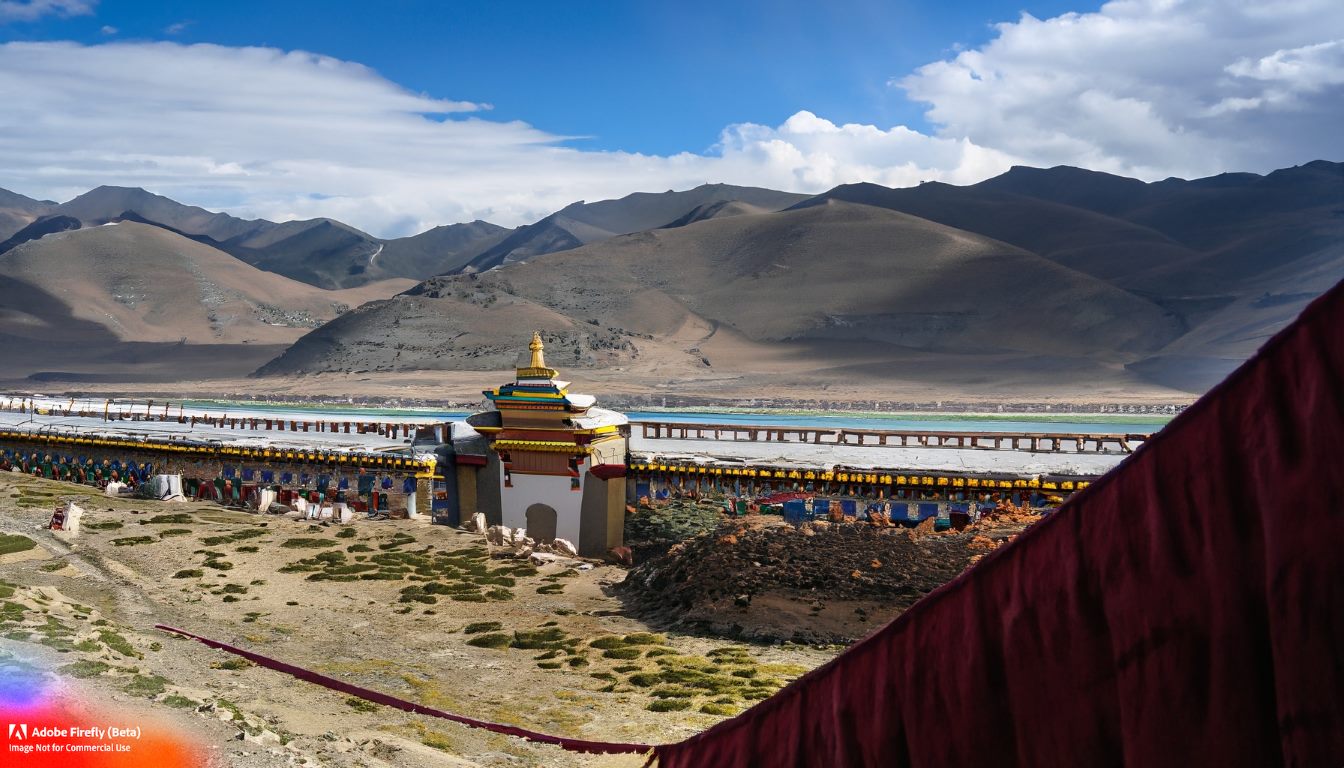
Tibet, a region rich in history, culture, and natural beauty, is known and famous for several distinct aspects. Here are some of the key elements that contribute to Tibet’s reputation:
Tibetan Buddhism:
Tibet is widely recognized as a center of Tibetan Buddhism, which holds significant religious and cultural importance. The region is home to numerous monasteries, temples, and sacred sites that attract pilgrims and spiritual seekers from around the world. The Dalai Lama, the spiritual leader of Tibetan Buddhism, has been a prominent figure who has garnered global attention.
Stunning Landscapes:
Tibet is renowned for its breathtaking landscapes, characterized by towering mountain ranges, including the Himalayas with Mount Everest, the highest peak in the world. The region also boasts vast grasslands, serene lakes like Lake Namtso and Lake Yamdrok, deep gorges, and picturesque valleys. The natural beauty of Tibet is often associated with tranquility and awe-inspiring scenery.
Tibetan Plateau:
Tibet is situated on the Tibetan Plateau, often referred to as the “Roof of the World.” It is the highest and largest plateau globally, known for its extreme altitude and unique ecosystem. The plateau supports diverse wildlife, including the rare Tibetan antelope, wild yaks, and various bird species, attracting nature enthusiasts and researchers.

Rich Culture and Traditions:
Tibet has a rich cultural heritage deeply rooted in Tibetan Buddhism. Its unique traditions, rituals, art, and architecture have captivated people worldwide. Tibetan thangka paintings, intricate mandalas, colorful festivals like Losar (Tibetan New Year), and traditional dances such as cham are emblematic of the vibrant Tibetan culture.
Tibetan Cuisine:
Tibetan cuisine has gained recognition for its distinctive flavors and ingredients. Traditional Tibetan dishes often incorporate staples like tsampa (roasted barley flour), yak meat, dairy products, and momos (dumplings). Tibetan butter tea, made from yak butter and tea leaves, is a notable beverage associated with Tibetan hospitality.
Mountaineering and Adventure Tourism:
The towering peaks of the Himalayas in Tibet attract mountaineers, adventurers, and trekkers from around the globe. The region offers challenging climbing routes, including the iconic Everest Base Camp trek, as well as opportunities for high-altitude mountaineering and expedition adventures.
Tibetan Handicrafts:
Tibet is known for its exquisite handicrafts, including intricate metalwork, wood carvings, Thangka paintings, and finely woven carpets. These artistic creations showcase the skill and craftsmanship of Tibetan artisans and are highly sought after by collectors and art enthusiasts.
Tibetan Medicine:
Tibetan traditional medicine, known as Sowa Rigpa, has a long history and is widely practiced in Tibet and neighboring regions. This holistic system of healing incorporates herbal remedies, acupuncture, meditation, and various therapies to promote well-being and balance.
Spirituality and Meditation:
Tibet has long been associated with spirituality and the practice of meditation. The serene and isolated monasteries nestled in the mountains provide an ideal environment for individuals seeking spiritual growth and inner peace. Tibetan meditation techniques, such as mindfulness and visualization practices, have gained popularity worldwide.
Political History and Struggle:
Tibet’s political history and the ongoing Tibetan independence movement have attracted international attention. The Dalai Lama’s exile and Tibet’s political situation have made Tibet a symbol of resilience and a focus of political activism.
Summary
These are just some of the aspects that contribute to Tibet’s fame and recognition on the global stage. The region’s unique blend of spirituality, natural wonders, cultural heritage, and political history continue to captivate people’s imaginations and draw them to this remarkable land.






